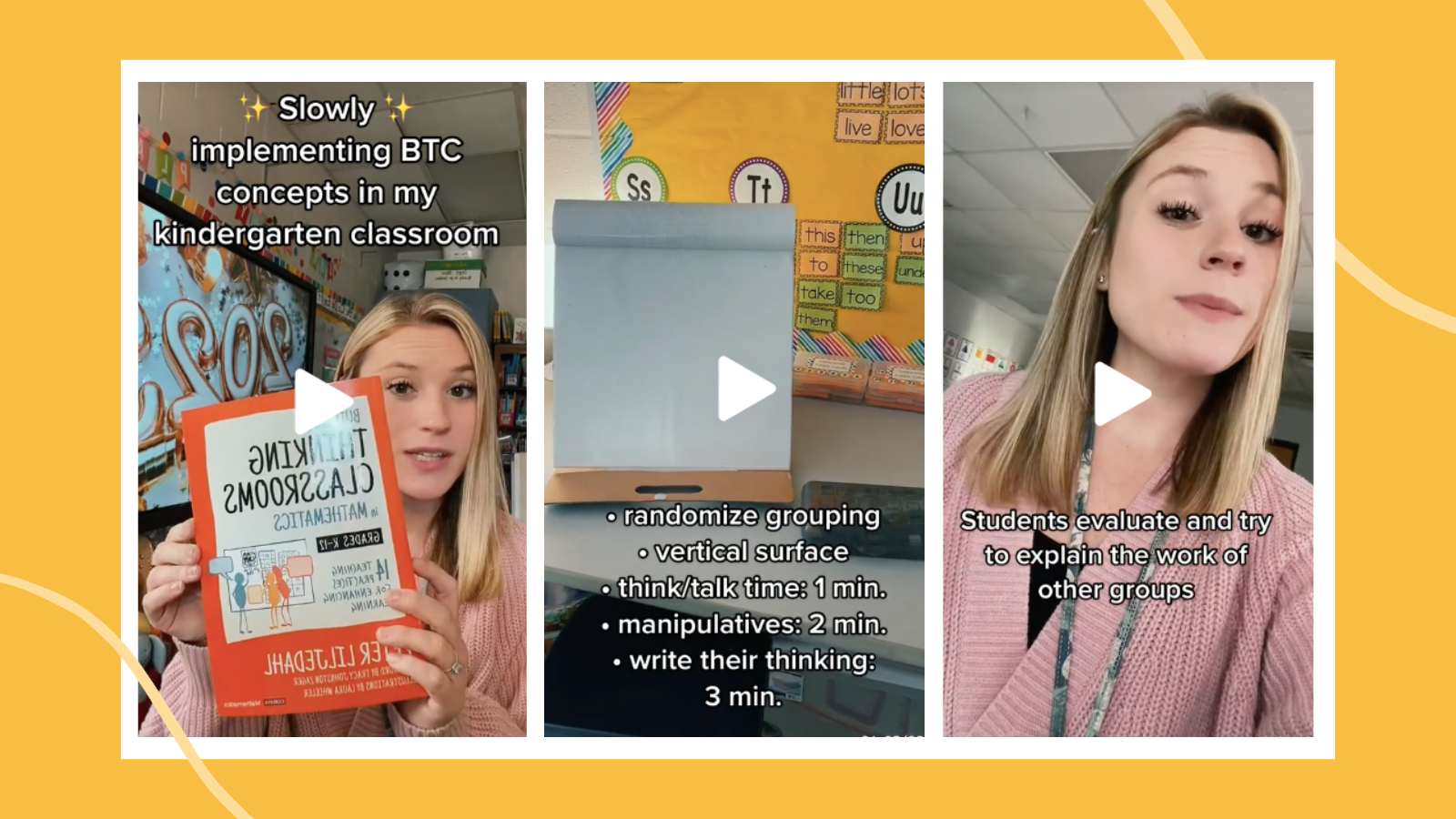Lately, it seems as though I’ve been seeing strategies from Building Thinking Classrooms in Mathematics show up everywhere. From randomized grouping to vertical non-permanent surfaces (what?), professor and author Peter Liljedahl’s work is gaining a strong foothold in classrooms. But how is it possible that strategies in AP calculus classes could be adapted for our youngest math learners? If you’re interested in bringing thinking classroom strategies to your lower elementary class but aren’t convinced it’s possible, check out Tik Tok teacher Megan breaking it down for kindergarten.
How impressive is that? But if you look a little deeper, you’ll realize she’s actually implementing a number of research-based thinking classroom strategies that take this lesson from good to great. Let’s take a closer look at how she’s doing it and how you can bring the strategies to your own classroom.
Strategy 1: Give students a thinking task
Rather than following the traditional “I do, we do, you do” format, Megan flips the lesson by giving her students the subtraction problem they haven’t yet learned to solve. This means students will actually have to think about how to use the tools and resources they’ve been provided to solve the problem, rather than mimicking a strategy shown by their teacher. Providing manipulatives ensures students have a way to make their thinking visible to one another and promote collaborative discussion.
Strategy 2: Get students working on vertical non-permanent surfaces
If you’re wondering what the heck a vertical non-permanent surface is, allow me to clarify. Though it sounds like the latest edu-buzzword, it’s really just any vertical surface that students can write on and easily erase. The term vertical non-permanent surfaces is intentionally broad, encompassing whiteboards, chalkboards, laminate tables stood on their sides, and even windows. Megan makes this work in her kindergarten room using small whiteboards on easel stands.
Almost any teacher will tell you that some students work better standing than sitting, but now there’s research to back up this assertion. Getting students up and out of their seats promotes engagement. Additionally, when students are standing, their actions are more visible to their peers and their teacher. This discourages them from being off-task and from disengaging. As for the “non-permanent” part? Being able to easily erase promotes academic risk-taking, as students don’t feel there is a permanent record of their mistakes.
If you’re worried about what admin might think if they walk in and see your students all out their seats or writing on the windows, know that there’s legitimate academic research to back this up. A February 2015 publication of Liljedahl’s findings states, “Groups that worked on vertical whiteboards demonstrated more thinking classroom behaviour—persistence, discussion, participation, and knowledge mobility—than any of the other types of work surface.” This result came from comparing 46 groups of students across five classrooms. (Bookmark that paper to share with your principal!)
Strategy 3: Promote knowledge mobility with a gallery walk
Did you catch the use of the term knowledge mobility in the quote above? Megan incorporates this practice of moving ideas between small groups seamlessly into her lesson using a gallery walk. But she does so with a very important twist. Rather than having groups explain their work, she asks students who were not in the group to look at their classmates’ work and describe their approach to solving the problem. This highlights different strategies for solving the same problem and showcases a beautiful diversity in mathematical thinking. Additionally, this introduces students to problem-solving strategies their group may not have used, further filling their math toolbox.
High-quality instruction for ALL grade levels
For lower elementary teachers who are curious about implementing thinking classroom strategies, Megan offers an approachable way to get started. She also showcases the importance of high-quality, research-based instruction at all grade levels. Anyone who thinks kindergarten is just arts and crafts will be blown away. Clearly, Megan’s students are doing meaningful, rigorous work. Just imagine what they’ll be capable of as they continue to build their thinking strategies.

